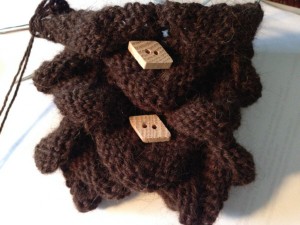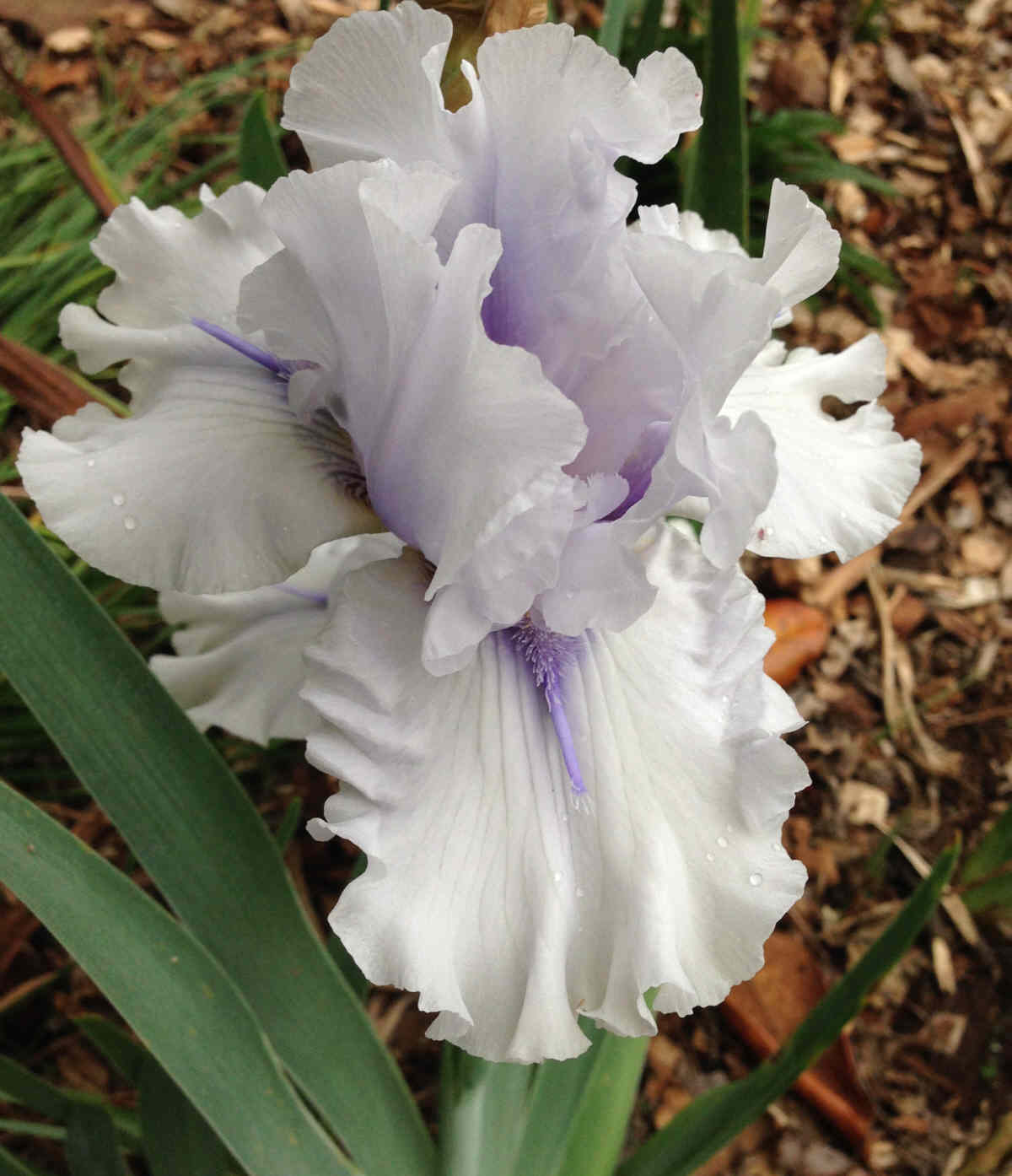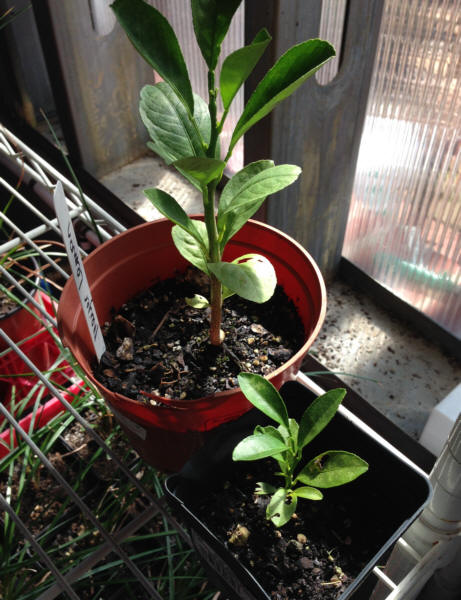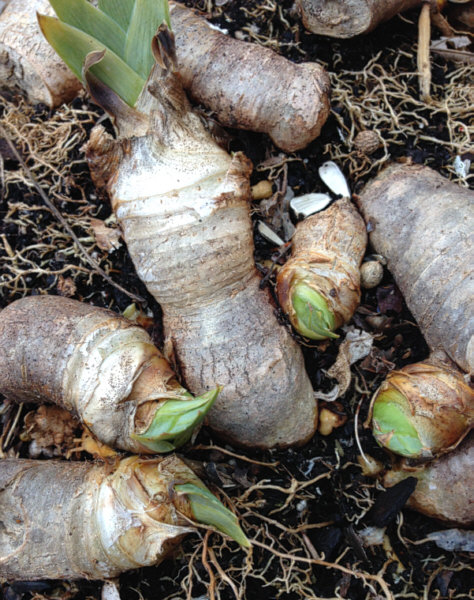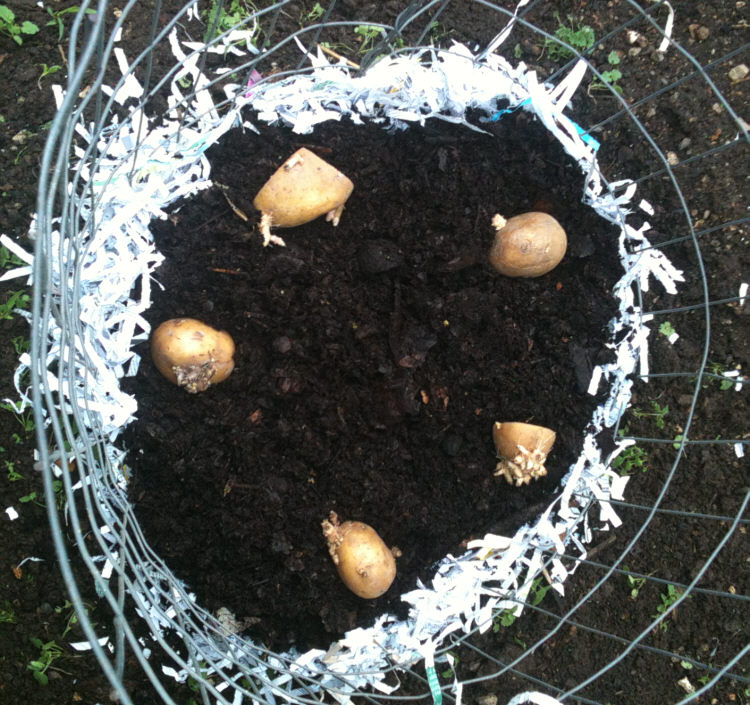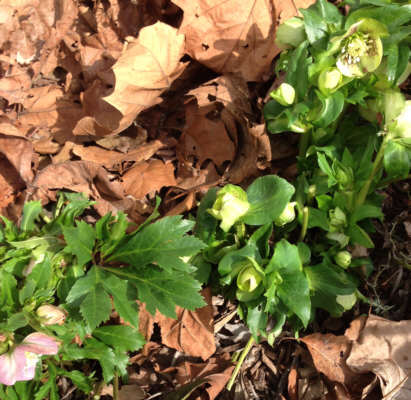 Just like cars, tools, and even people need regular
Just like cars, tools, and even people need regular
service, so do the Hellebore plants in our gardens. 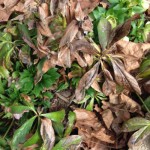 After Mother Nature visits with freezing temperature, lenten rose plants will look like this picture to the right. Ratty, crispy brown foliage with hints of flowers just below. Your plants need your help!
After Mother Nature visits with freezing temperature, lenten rose plants will look like this picture to the right. Ratty, crispy brown foliage with hints of flowers just below. Your plants need your help!
Get the clippers or garden scissors, maybe your knee pads and go to work.
Giving your helleborus plants a hair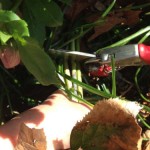 cut is quite easy:
cut is quite easy:
Bundle up 3-5 ratty looking stems and snip them off with your scissors somewhere close to the base of the plant. Go all around the plant, snip, snip, snip, until all that is left are the flowers and your plants should look similar to the picture on top, healthy and ready to delight you every time you walk past.
Enjoy your naked hellebore!
Monthly Archives: February 2014
Iris – When to Plant or not to Plant
The answer is…… it depends on where you live and whether you want to have flowers the first season after planting.
Generally, iris can be dug, divided and planted all year. Many people plant them in late summer and fall. At that time single rhizomes are the largest and the weather in most parts of the country is very suitable for the plants to settle in. Minimal intervention from gardeners is needed as fall brings plenty of rain and cooler temperatures.
In my garden, I divide and move them when I get around to it. The main disadvantage in planting too late in the spring is a delayed bloom time and first blooms may not look their best. Iris blooms not quite their best, however, still look awesome!
Growing Citrus Trees from Seeds
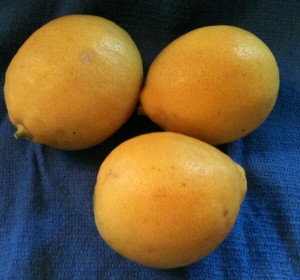 My mother-in-law sent some Kumquats (C. japonica) and Meyer Lemons (C. × meyeri) fresh from her garden. They were beyond delicious!
My mother-in-law sent some Kumquats (C. japonica) and Meyer Lemons (C. × meyeri) fresh from her garden. They were beyond delicious!
You are probable familiar with Meyer lemons, their sweeter, less acidic flavor is a favorite for lemon cakes and fresh squeezed lemonade. Kumquats, on the other hand, may be a type of fruit that you have passed up. Bitter centers and huge seeds! Yuck! NOT!
Kumquat fruit may look like a mini orange but unlike oranges, when eaten raw, one eats the peel and outer flesh only. The whole fruit can be eaten cooked and is mainly used to make marmalades and jellies.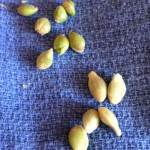
Best of all, both of these delicious fruits can be grown from their seeds. It’s easy peasy as one of my friends likes to say. The most important (and tedious) part is removing the fibrous coat from the seeds. I use a sharp knife to peel away the white coat and end up with the naked seeds (top).
All that’s  left to do is pu
left to do is pu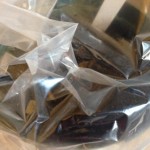 t them in a pot and cover with a plastic bag. The bag holds in moisture and has to be removed once the seeds start to sprout.
t them in a pot and cover with a plastic bag. The bag holds in moisture and has to be removed once the seeds start to sprout.
It will take about 6 weeks in 65+ degree temperatures until sprouts appear. Once there are a couple of leaves, I transplant my future citrus trees into small pots (3-4 inch size, front) after about 6 months, the seedlings are ready to move along into a quart size pot (back) and, hopefully, in about 3-4 years time, fresh Kumquats and Meyer lemons will be ready for harvest.
Iris plants after a hard freeze in USDA Zone 7
Have you taken a walk in your garden lately?
This winter has brought us quite a few ‘firsts’ in our garden. For those readers living in the northern states, plants that are hard dormant are a fact of life. For us, however, this January was the first time in 20+ years that I have seen hard dormancy in many plant species in our USDA Zone 7 garden.
It’s a scary sight to unaccustomed eyes. On a warmish day, one may be quite tempted to pull back leaf cover and maybe even dig a little. Just a little, to check if plants are still there. Trust me, they are. Give them a little time and they will pop right back up and will thank you if you have not disturbed their roots. But even if you did dig a little, they will most likely pop right back up as soon as the sun comes out.
I couldn’t resist and dug a little in one of my beds. ALL the greenery had completely frozen and disappeared from these iris plants in January – look, they are peeking back out already.
A Day in the Life of a Backyard Nursery Owner
One of my friends asked “What do you do in your business when it’s not planting time?”
mhmhmhmzzz. The list is long.
Today, I started by watering the plants and misting the cuttings in the greenhouse. Then I swept the greenhouse floor and turned into plant detective. I looked for critters such as aphids and spider mites and any signs of diseases that love infesting greenhouse plants.
Next, I finished printing shipping labels and getting packages mailed out. While doing so, I noticed that I was out of the Tennessee Shipping Notification certificates that are required for plant shipments. So the remainder of the morning was spent on printing and filling out a, hopefully sufficient,supply of the certificates for the spring 2014 shipping season.
After all that tedious work, first a lunch break and then a little fun activity: Looking through one of the suppliers catalogs and the availability list. Next, checking the business budget to see how much money is available for purchasing. Happy Dance, followed by a call to the broker to order some more new products, followed by another happy dance when the desired items are still available.
Then checking and answering emails, printing out paperwork for orders that will be shipped tomorrow. Pulling and packing products.
In between: Looking at Facebook. Answering the phone. Making coffee. Making Tea. Running a load of laundry. Knitting a few rows.
Finally, just enough time left in the day to write this blog post and then I am off to an evening yoga class.
OH, you’re wondering what I may have selected?
Honestly, it wasn’t easy. the catalogs are always so beautiful and the selection is difficult. Maybe you know exactly what that feels like? My focus today was a few more edibles, particularly interesting edibles that won’t be on the shelves at the local box store.
Look for these new plants in our online store Edibles section later this month.
Hardy Kiwi, Goji Berry, Haskap Berry, Seedless Red Grapes, and Seed Potatoes.
I am planning to do a potato tower this year. The last time I tried with store bought potatoes and it was not a success (despite how well the planting looked when I started out). I have learned why and will share my experiences when the time comes to start the tower for the 2014 season.
Bottle Tree Peacock
Crocodile Stitch Boot Topper
The first one is finished and the large Juniper wood buttons won.
My pattern can be found on Ravelry.
We have opened our etsy shop! pattern and buttons can be found there.
Knitted Crocodile Stitch Boot Toppers
A friend posted a picture of crocheted crocodile stitch boot toppers in one of my groups and I was immediately in love! But…but…but… I hate crochet. After looking at hundreds of knitting stitches and patterns, it was clear: There is no pattern available for a knitted crocodile stitch. I had to make up my own pattern.
After some trial and error, the first boot topper is nearing completion and I need some help in picking which of these buttons I should use. All buttons were crafted by my hubby Jeff.
#1: large round wooden button made from juniper wood
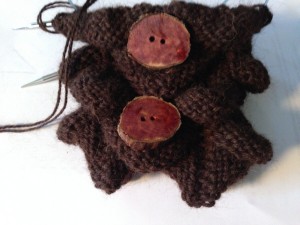 #2 smaller round wooden button made from crepe myrtle wood
#2 smaller round wooden button made from crepe myrtle wood
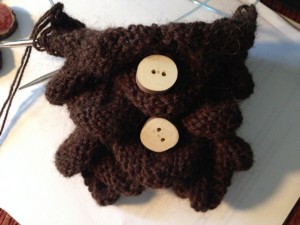 #3 diamond shape wooden button made from oak wood
#3 diamond shape wooden button made from oak wood
